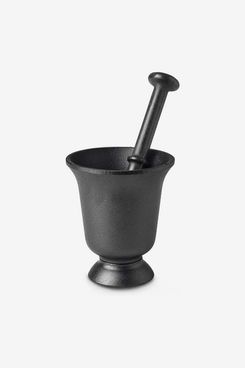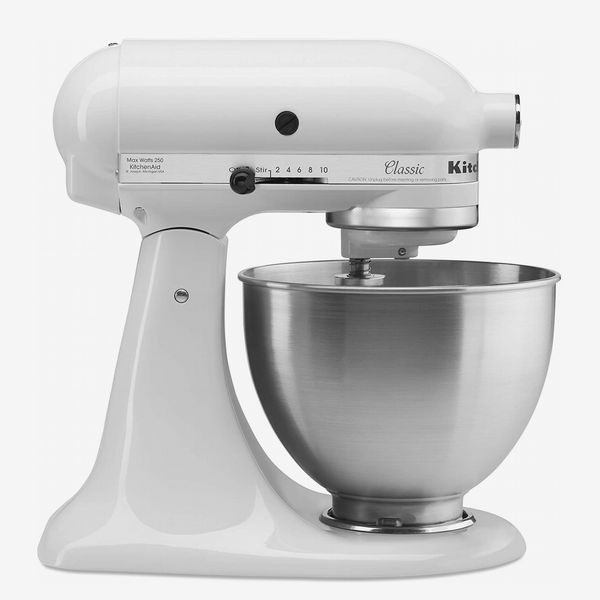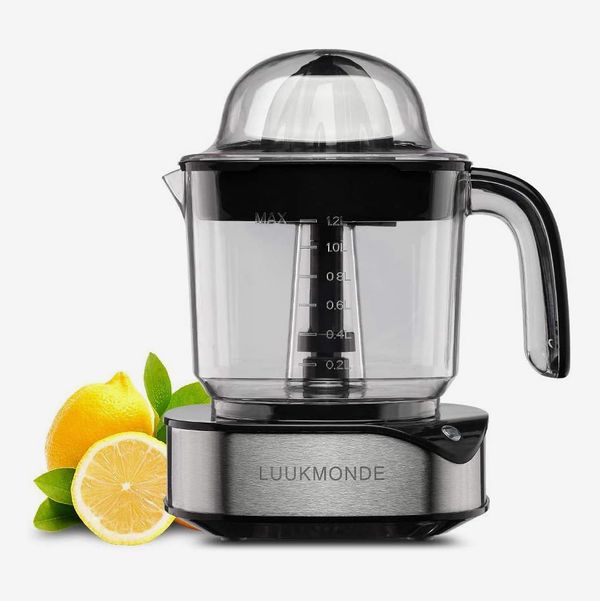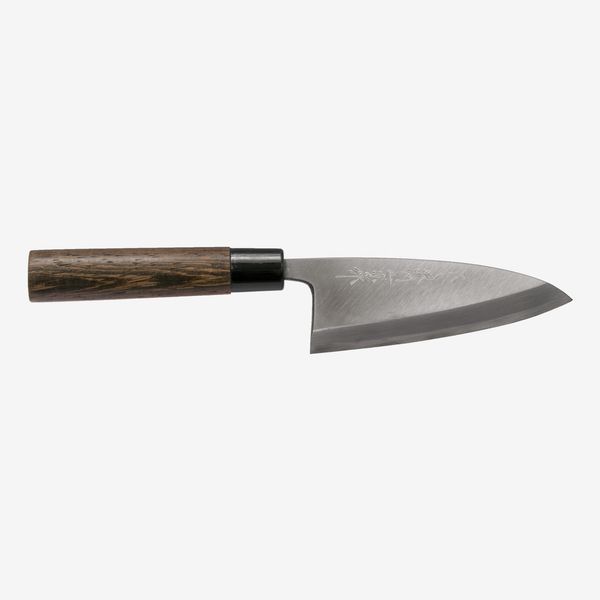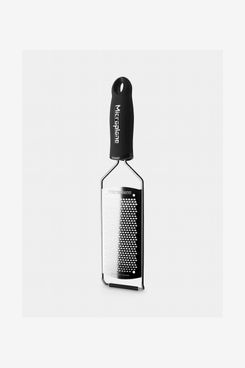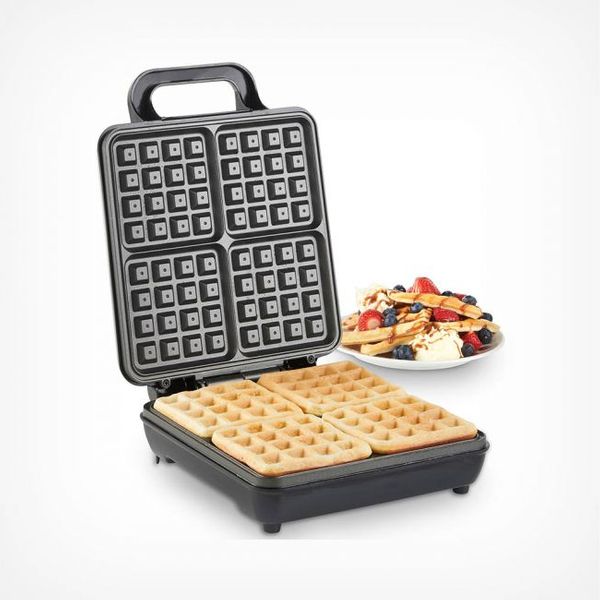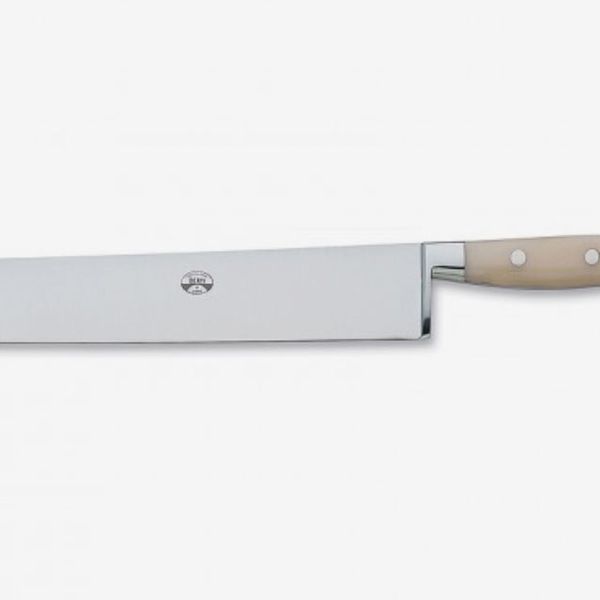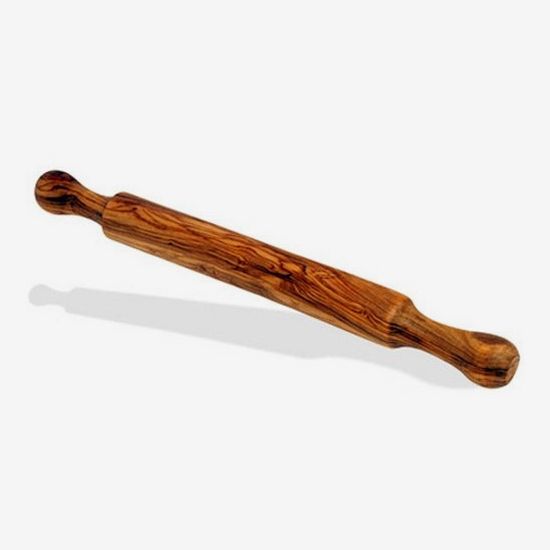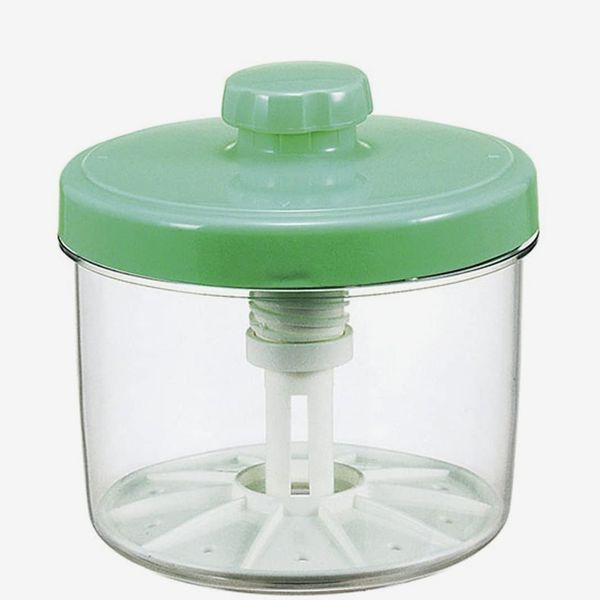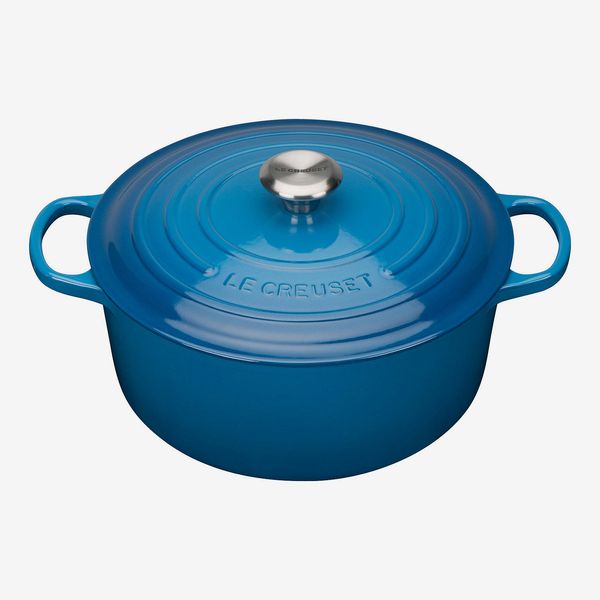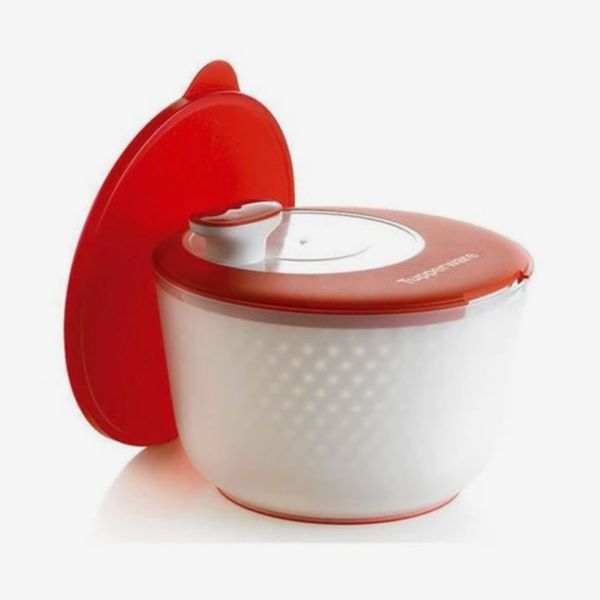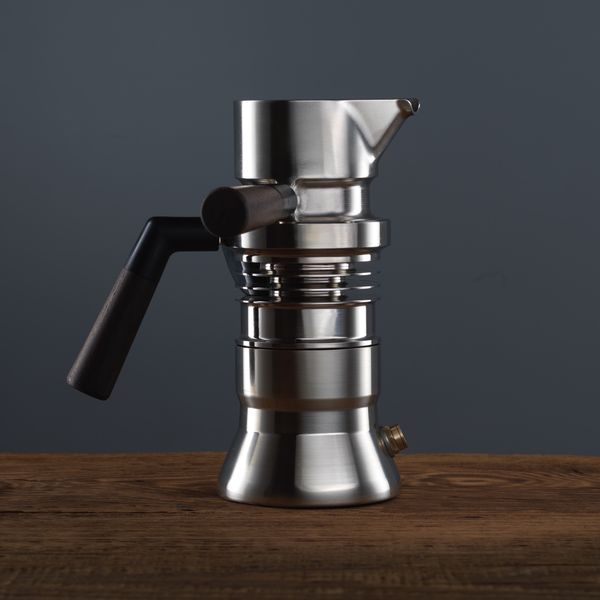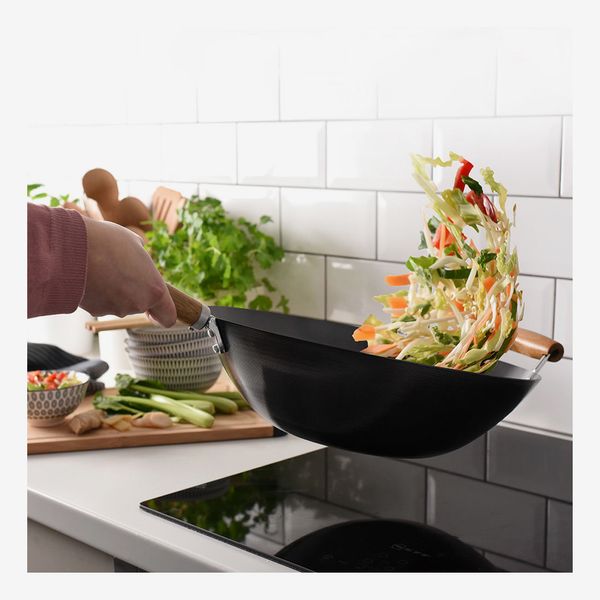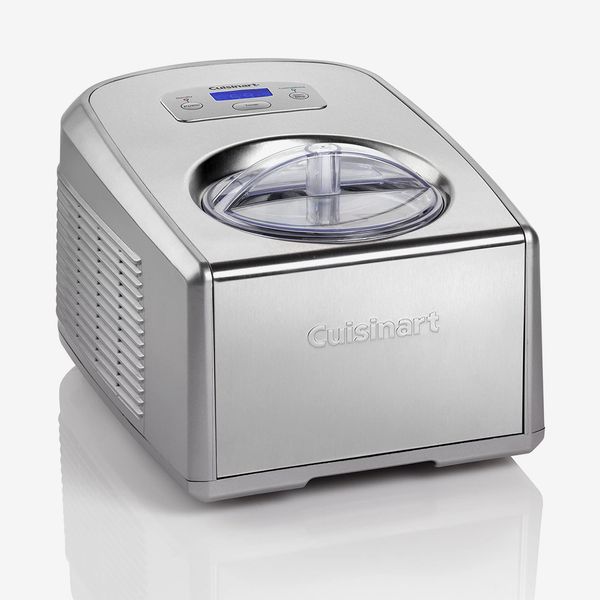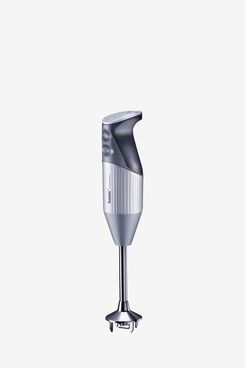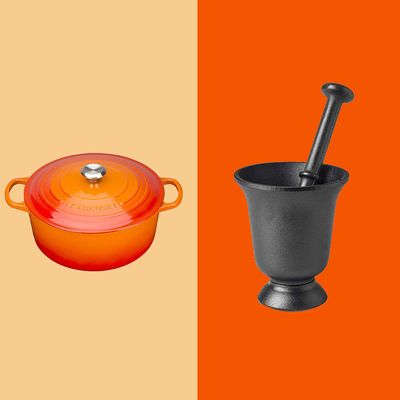
One upside of the current climate is a lot more time for cooking at home. And that means everyone, chefs included. So we approached some of London’s finest restaurateurs, from classically trained pasta chefs to Michelin-starred fusion cooks, and asked them to share their most invaluable piece of kitchen kit. Here, 15 chefs give their recommendations, from pickle presses, pestles, and ice-cream-makers to the best blenders and casserole dishes to order online.
“I can’t live without my pestle and mortar,” says Saiphin Moore, founder of Rosa’s Thai Cafe. “It’s an essential for Thai cooking. We use it to make papaya salad, chile dips, and bash up chile and garlic for the base of all of our stir-fry dishes. At home, I use it to make red and green Thai curry paste.” While in normal circumstances Moore would recommend an unbranded wooden mortar from Chinatown, she says this model from Le Gourmet has the necessary size and weight needed for Thai dishes.
While viewers might recognise it from the Great British Bake Off tent, the KitchenAid stand mixer has long been a staple in the kitchens of gourmet chefs. “It’s the most versatile machine you can have,” says Eran Tibi, head chef of Israeli restaurant Bala Baya. “You can make all the pastries and obvious baking recipes, but I use it for so much more: kebabs, meatballs, sausages, pastas.” Tibi recommends upgrading your mixer with add-ons such as the grinding/straining attachment or the pasta rolling/shaping kits. As for the high cost, he stresses that you get what you pay for. “These machines last decades, and their warranty is superb,” he says. [Editor’s note: This product is currently out of stock at multiple retailers.]
Social Pantry founder, Alex Head, has been experimenting with fruit and veg during her time at home. “This week, I treated myself and bought this simple juicer,” she says. “Now that I have a little more time in the mornings, I wanted to embrace a slower start to the day. Squeezing a couple of oranges for juice lets me do that.” [Editor’s note: This product is currently out of stock.]
“It might sound strange, but a well-weighted, properly sharp knife inspires you to want to be a better cook, and somehow gives everything you make more finesse,” says Gizzi Erskine, food writer and founder of new restaurant the Nitery. For her knives, Erskine goes to Soho’s Japanese Knife Company, whose products she describes as “like works of art” — even though she admits they come on the pricier side. “But cheap knives are actually a false economy,” she says. “They never stay sharp, and they need replacing all the time, so I really believe in investing in one or two serious, beautifully made knives to keep for life.”
“I use my Microplane almost daily,” says Grace Regan, chef-owner of Walthamstow curry house SpiceBox. “I only ever grate garlic and ginger now, as it’s the best way to release the flavour — that’s a tip I always give people when teaching them how to make curries.” The tool can also be used for zesting citrus fruits, grating spices like nutmeg and cinnamon, or just as a fuss-free approach to topping dishes with cheese.
Emeka Frederick, one-half of the sibling duo behind Nigerian tapas restaurant Chuku’s, recommends VonShef’s restaurant-quality waffle iron, saying it’s good for more than just making breakfast. “Without it, there’d be no plantain waffles,” he says. “That’s not a thing worth thinking about.” In fact, the Fredericks use theirs so much that Emeka says they keep a second one “as a backup.”
If searching for the perfect pasta knife, there are few people better suited to ask than Roberta d’Elia, head ‘sfoglina’ at Pasta Evangelists. Her choice is a knife from Italian brand Quintessenza. “I’m not usually one for fancy tools,” d’Elia explains. “My nonna taught me to roll pasta dough with a bottle of wine instead of a rolling pin.” But d’Elia’s one indulgence was a Quintessenza knife, which she bought just before moving to the U.K. “It’s so versatile,” she says. “The wide and rigid blade is perfect for cutting long pasta like tagliatelle, tagliolini, and pappardelle, but it’s also great for slicing mature cheeses like Pecorino and Parmigiano, or cured meats for my antipasti boards.” [Editor’s note: Shipping costs are not included in this price.]
“Pasta rolled with a pin is always much better,” says Masha Rener, executive chef at Lina Stores. “When I was a child, we had a rolling pin which was over 200 years old and made from the wood of an olive tree. It made the thinnest pasta dough.” Rener prefers working with smooth olive wood — and, in an ideal world, says your best bet would be an olive tree and a local carpenter. When that’s not a possibility, her pick is this Mastro Leonardo pin, handmade in Italy from 100 percent olive wood.
Since lockdown began, Casa do Frango head chef Lucien Green is just one of many who have turned their minds to pickling. When he makes his, Green uses a Tsukemono pickle press. “With the simple addition of a little salt and some aromatics, it accelerates the vegetable pickling process,” he says. “And since no vinegar is used, a cleaner taste is achieved. You can make delicious pickled vegetables in just a few hours.” [Editor’s note: Shipping costs are not included in this price.]
While the quality of a Le Creuset might speak for itself, 45 Jermyn St. head chef Jamie Shears is keen to stress the necessity of a good casserole dish for any aspiring at-home chef. “It’s an essential for slow cooking,” he says. “I use it to make hearty dishes like braised beef cheeks and osso buco with saffron risotto, and it’s seen some brilliant curries in its time. It even makes a great loaf of bread.” Shears recommends a 26-centimetre dish, which will make enough food for six people.
Ana Gonçalves, co-founder of Tata Eatery and sando offshoot Tōu, says that she uses the Spinning Chef salad spinner “pretty much every day.” Having tried others on the market, Gonçalves says there’s no comparison. “The difference between this one and an ordinary container is that you can still keep the basket in it, which means water still drains while keeping food refrigerated,” she says. “It’s perfect for herbs, washed fruits, or anything that has excess water.” It comes with its own lid to keep it airtight when stored.
For Bocca di Lupo chef-owner Jacob Kenedy, being stuck at home doesn’t mean foregoing café-quality coffee. To make his, he uses the 9Barista espresso machine, designed by jet engineer Will Playford. “He saw a synergy between how jet engines deal with temperature and pressure, and coffee,” explains Kenedy. “The result is a blindingly handsome, smart, elegant solution, which uses a high-temperature boiler to get the pressure up, then evaporative cooling to bring the temperature down to perfect espresso conditions.” Kenedy, who bought one in the first round on Kickstarter, says the end result is “as good as I’d have at Monmouth Coffee” — from whom he recommends ordering your beans.
Although his restaurant is known for complex dishes, Jeremy Chan, chef and co-founder of Michelin-starred Ikoyi, likes to keep things simple at home. “My favourite kitchen tool would have to be my wok,” he says, praising its versatility. “I can steam vegetables, scramble eggs, and fry rice while imparting a good smoky flavour to all the food.” Chan uses his wok to make his favourite simple sauce, which involves heating oil to a high temperature, then pouring it over soy sauce and finely minced ginger and garlic. And while his most-used wok was bought in a market in Hong Kong, he says this ProCook model will more than do the trick.
For those keen to experiment, now might be the time to finally try making ice cream. Lucy Carr-Ellison, co-founder of Wild by Tart, says the best way of doing so is with this Cuisinart machine. “It’s so quick and easy that it means you can whip up a batch for lunch or supper in about half an hour,” she says. “For dinner parties, we like to serve extra-virgin-olive-oil ice cream along with poached seasonal fruit. Or, in early summer, when strawberries are sweet and in abundance, we often make strawberry and basil ice cream.” When buying, Carr-Ellison advises getting the machine with a built-in freezing system, as pre-freezing the bowl for use can be “a bit of a faff.”
“I swear by a good Bamix stick blender,” says Kerth Gumbs, head chef at Ormer Mayfair. “I use it to make purées, marinades, spice mixes, and sauces.” While the Bamix brand are synonymous with the highest-quality kitchen implements, father-of-four Gumbs’s current diners aren’t always so discerning. “I have a toddler, and it really comes in handy to prepare food for her,” he says.
The Strategist UK is designed to surface the most useful, expert recommendations for things to buy across the vast e-commerce landscape. Read about who we are and what we do here. Our editors update links when possible, but note that deals can expire and all prices are subject to change.
